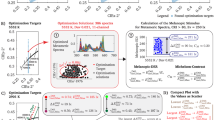Abstract
In this study, we used an LED (light-emitting diodes) light source to develop the the best combination of light wavelengths for nighttime lighting based on the LED advantages of narrow band and controllable spectrum.The action spectrum is based the research of Professor Brainard in the field of non-visual response model, which is used for designing circadian stimulation of LED. The CS/Lm (Circadian stimulus/Photonics lumens) values were calculated from the equations, which resulted in 8.9 × 10−4 for Fluorescent lighting (FL) of correlated color temperature (CCT) 5000 K, 5.2 × 10−4 for FL of CCT 3000 K and 4.4 × 10−4 for LED lighting of CCT 3000 K. Eight healthy males were exposed to various lighting conditions at midnight, and the physiological parameters including pupil diameter, melatonin secretion, delay of melatonin onset (DLMO), rectal temperature and subjective sleepiness were measured. Two results from the experiment were generated. Result (1) shows that LED 3000 K demonstrated the melatonin significantly increased (p < 0.05) when the light exposures of LED 3000 K, FL 3000 K and FL 5000 K reached retina with identical quantum state. Result (2) shows the melatonin onset in the 2nd night under LED 3000 K was almost the same as that under dim condition. The experimental results show that LED lighting will lead to lower interference on melatonin and DLMO than fluorescent lights, which is similar to the result of CS value. This paper provides a sound basis for designing LED spectrum concepts. By the simulation spectrum program develops, and the experiment verification. LED light source shows a high-value potential to use in our daily life.













Similar content being viewed by others
References
Boivin DB, Duffy JF, Kronauer RE, Czeisler CA (1996) Dose-response relationships for resetting of human circadian clock by light. Nature 379(6565):540
Brainard GC, Hanifin JP, Greeson JM, Byrne B, Glickman G, Gerner E, Rollag MD (2001) Action spectrum for melatonin regulation in humans: evidence for a novel circadian photoreceptor. J Neurosci 21(16):6405–6412
Brainard GC, Sliney D, Hanifin JP, Glickman G, Byrne B, Greeson JM, Jasser S, Gerner E, Rollag MD (2008) Sensitivity of the human circadian system to short-wavelength (420-nm) light. J Biol Rhythms 23(5):379–386
Brainard GC, Hanifin JP, Warfield B, Stone MK, James ME, Ayers M, Kubey A, Byrne B, Rollag M (2015) Short-wavelength enrichment of polychromatic light enhances human melatonin suppression potency. J Pineal Res 58(3):352–361
Cajochen C, Münch M, Kobialka S, Kräuchi K, Steiner R, Oelhafen P, Orgül S, Wirz-Justice A (2005) High sensitivity of human melatonin, alertness, thermoregulation, and heart rate to short wavelength light. J Clin Endocrinol Metab 90(3):1311–1316
Duffy JF, Czeisler CA (2009) Effect of light on human circadian physiology. Sleep Med Clin 4(2):165–177
Fonken LK, Nelson RJ (2014) The effects of light at night on circadian clocks and metabolism. Endocr Rev 35(4):648–670
Graham DM, Wong KY (2015) Melanopsin-expressing, intrinsically photosensitive retinal ganglion cells (ipRGCs). In: Kolb H, Fernandez E, Nelson R (eds) The organization of the retina and visual system. University of Utah Health Sciences Center, Salt Lake City, UT
Higuchi S, Motohashi Y, Liu Y, Ahara M, Kaneko Y (2003) Effects of VDT tasks with a bright display at night on melatonin, core temperature, heart rate, and sleepiness. J Appl Physiol 94:1773–1776
Kozaki T, Koga S, Toda N, Noguchi H, Yasukouchi A (2008) Effects of short wavelength control in polychromatic light sources on nocturnal melatonin secretion. Neurosci Lett 439(3):256–259
Lewy AJ, Wehr TA, Goodwin FK, Newsome DA, Markey SP (1980) Light suppresses melatonin secretion in humans. Science 210(4475):1267–1269
Lockley SW, Brainard GC, Czeisler CA (2003) High sensitivity of the human circadian melatonin rhythm to resetting by short wavelength light. J Clin Endocrinol Metab 88(9):4502
Lockley SW, Evans EE, Scheer FA, Brainard GC, Czeisler CA, Aeschbach D (2006) Short-wavelength sensitivity for the direct effects of light on alertness, vigilance, and the waking electroencephalogram in humans. Sleep 29(2):161–168
Paul KN, Saafir TB, Tosini G (2009) The role of retinal photoreceptors in the regulation of circadian rhythms. Rev Endocr Metab Disord 10(4):271–278
Rahman SA, Flynn-Evans EE, Aeschbach D, Brainard GC, Czeisler CA, Lockley SW (2014) Diurnal spectral sensitivity of the acute alerting effects of light. Sleep 37(2):271
Rea MS, Figueiro MG, Bullough JD, Bierman A (2005) A model of phototransduction by the human circadian system. Brain Res Rev 50(2):213–228
Revell VL, Arendt J, Fogg LF, Skene DJ (2006) Alerting effects of light are sensitive to very short wavelengths. Neurosci Lett 399(1):96–100
Schubert EF, Kim JK (2005) Solid-state light sources getting smart. Science 308(5726):1274–1278
Vandewalle G, Collignon O, Hull JT, Daneault V, Albouy G, Lepore F, Lockley SW (2013) Blue light stimulates cognitive brain activity in visually blind individuals. J Cogn Neurosci 25(12):2072–2085
Vimal RL, Pandey-Vimal MUC, Vimal LSP, Frederick BB, Stopa EG, Renshaw PF, Harper DG (2009) Activation of suprachiasmatic nuclei and primary visual cortex depends upon time of day. Eur J Neurosci 29(2):399–410
West KE, Jablonski MR, Warfield B, Cecil KS, James M, Ayers MA, Maida J, Bowen C, Sliney DH, Rollag MD, Hanifin JP, Brainard GC (2011) Blue light from light-emitting diodes elicits a dose-dependent suppression of melatonin in humans. J Appl Physiol 110(3):619–626
Yasukouchi A, Ishibashi K (2005) Non-visual effects of the color temperature of fluorescent lamps on physiological aspects in humans. J Physiol Anthropol Appl Hum Sci 24(1):41–43
Zeitzer JM, Dijk DJ, Kronauer R, Brown E, Czeisler C (2000) Sensitivity of the human circadian pacemaker to nocturnal light: melatonin phase resetting and suppression. J Physiol 526(3):695–702
Acknowledgments
This study was supported by the Industrial Technology Research Institute (ITRI, Taiwan) under LED Ergonomic Lighting Project.
Author information
Authors and Affiliations
Corresponding author
Rights and permissions
About this article
Cite this article
Lu, CC., Chou, C., Yasukouchi, A. et al. Effects of nighttime lights by LED and fluorescent lighting on human melatonin. J Ambient Intell Human Comput 7, 837–844 (2016). https://doi.org/10.1007/s12652-016-0383-2
Received:
Accepted:
Published:
Issue Date:
DOI: https://doi.org/10.1007/s12652-016-0383-2




